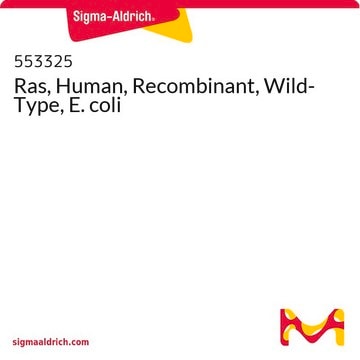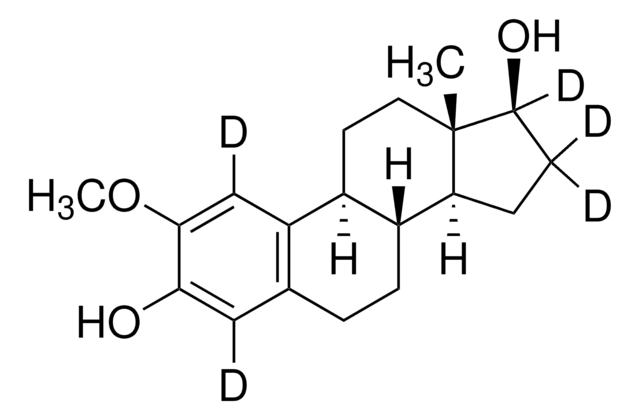R9894
Ras human
Wild type, recombinant, expressed in E. coli, buffered aqueous glycerol solution
Sinónimos:
H-Ras, rH-RAS, WT
Seleccione un Tamaño
399,00 €
Seleccione un Tamaño
About This Item
399,00 €
Productos recomendados
recombinante
expressed in E. coli
Ensayo
≥80% (SDS-PAGE)
Formulario
buffered aqueous glycerol solution
mol peso
28 kDa
Nº de acceso UniProt
Condiciones de envío
dry ice
temp. de almacenamiento
−70°C
Información sobre el gen
human ... RASGEF1B(153020)
Descripción general
Aplicación
Acciones bioquímicas o fisiológicas
Envase
Forma física
Código de clase de almacenamiento
10 - Combustible liquids
Clase de riesgo para el agua (WGK)
WGK 3
Punto de inflamabilidad (°F)
Not applicable
Punto de inflamabilidad (°C)
Not applicable
Elija entre una de las versiones más recientes:
¿Ya tiene este producto?
Encuentre la documentación para los productos que ha comprado recientemente en la Biblioteca de documentos.
Filtros activos
Nuestro equipo de científicos tiene experiencia en todas las áreas de investigación: Ciencias de la vida, Ciencia de los materiales, Síntesis química, Cromatografía, Analítica y muchas otras.
Póngase en contacto con el Servicio técnico






